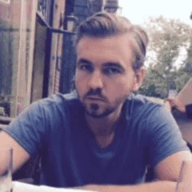This year’s Nobel Prize in Chemistry was awarded to two scientists, Dr. Emmanuelle Charpentier of the Max Planck Unit for the Science of Pathogens in Berlin, Germany and Dr. Jennifer A. Doudna of the University of California in Berkeley, USA “for the development of a method for genome editing” more specifically, CRISPR.
CRISPR has long been a topic of conversation and hope throughout the rare disease community because of its potential to help prevent certain inherited diseases. The two scientists are being awarded specifically for their work on the CRISPR/Cas9 genetic scissors.
Rare diseases pose a unique problem in terms of drug development. On one hand, their overall impact is huge—rare diseases, on the whole, are not rare. But as individual illnesses, they are difficult to tackle. When a certain disease impacts an incredibly small amount of the population, it can be impossible to gather the necessary resources to find treatments. Many of the treatments that are discovered are not curative. Instead they help ease suffering, alleviate symptoms, or slow the progress of the disease.
This new milestone in the CRISPR saga concerns intervention on a much more fundamental level, sounding a bit like science fiction. Scientists can now edit DNA with increasing precision, and this might allow them to cure rare diseases on a genetic level. The possibility of altering human heredity is not without controversy. A Chinese scientist was widely criticized when he used this technology to alter human embryos back in 2018, creating the first genetically modified babies.
By nearly all accounts, this technology is revolutionary, and with any revolution, there are risks that weigh even to the rewards. DNA are the building blocks of life and now we have the ability to change them—a tool this powerful needs to be wielded with a number of factors in mind, including ethics.
“We as a community need to make sure we recognize we are taking charge of a very powerful technology,” Dr. Doudna said. “I hope this announcement galvanizes that intention.”
CRISPR has already been used to treat someone with sickle cell, but there is a long way to go for it to address other conditions. That said, the progress so far is reason enough for hope. In a single generation, this technology might do something no other single treatment has been able to do—provide curative solutions to rare diseases as a whole.

